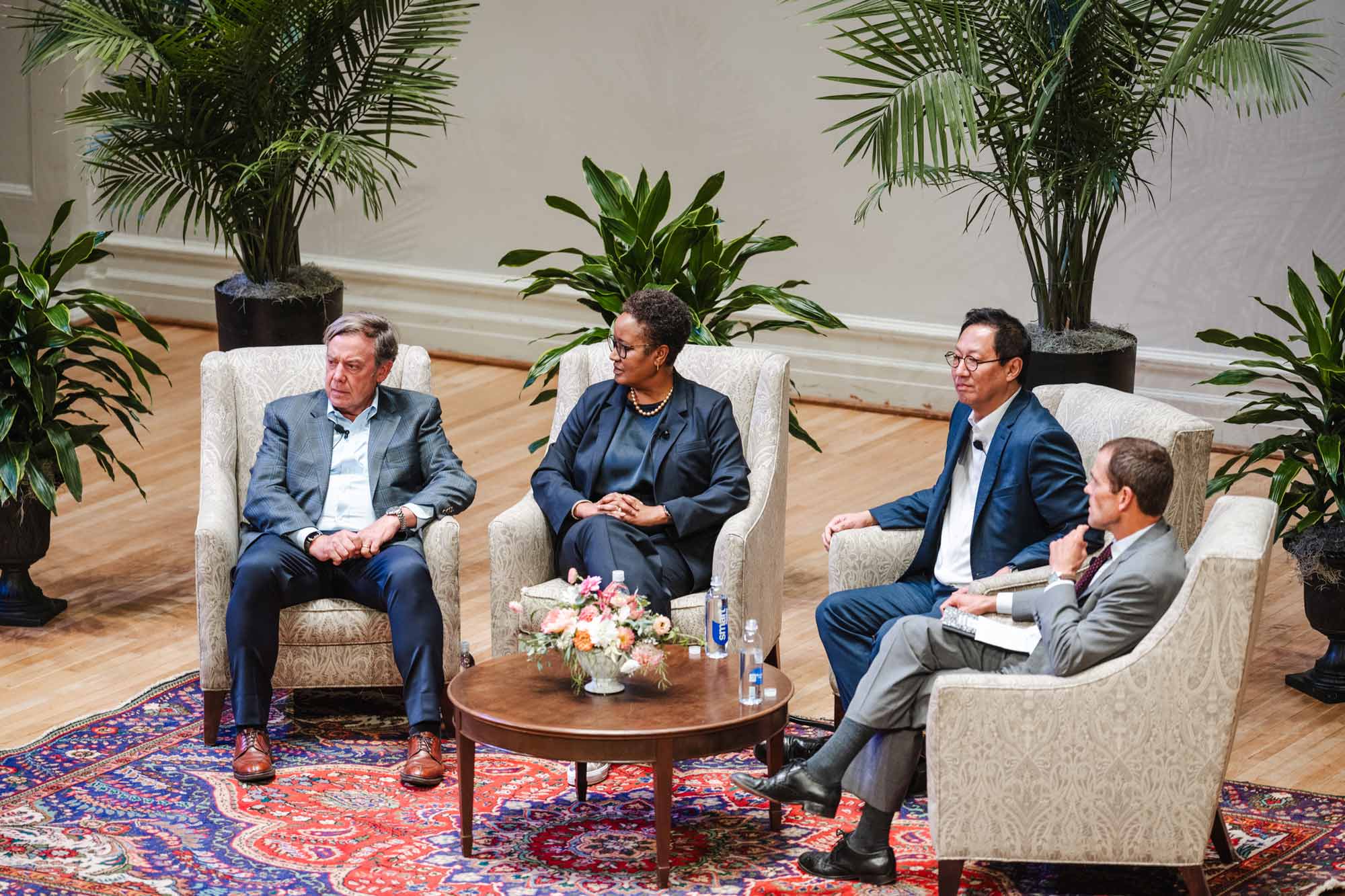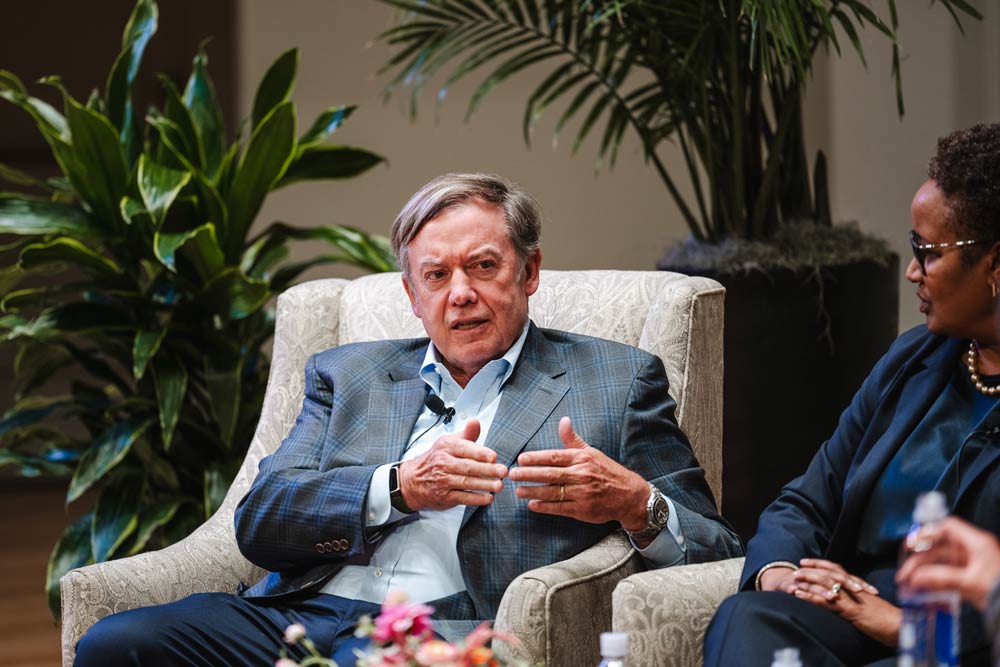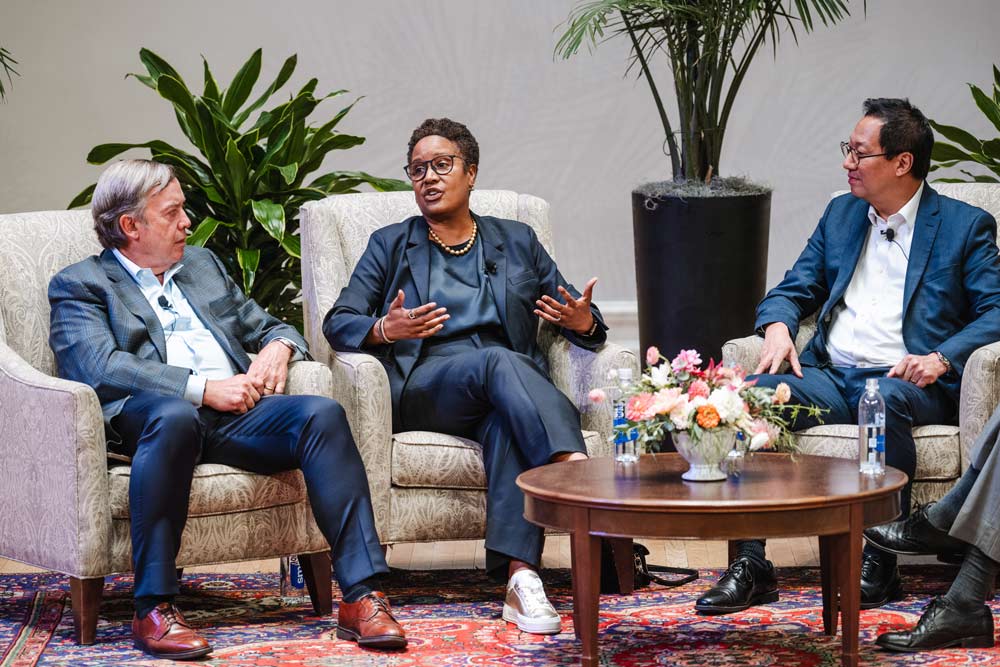University of Virginia President Jim Ryan wrote in the University’s 2030 Plan that “We must re-imagine what will be expected of universities in 2030.”
To discuss higher education’s future and how universities are or should be preparing to meet societal needs, Ryan moderated a panel of three university presidents on Thursday in the Old Cabell Hall auditorium.
He spoke with Harriet Nembhard, president of Harvey Mudd College in Claremont, Calif.; Michael Crow, longtime president of Arizona State University in Tempe; and Santa Ono, president of the University of Michigan.
The four schools represent an array of sizes, academic focuses and approaches to education. Arizona State University is among the largest universities in the U.S., with more than 73,000 undergraduate and graduate students from all 50 states, while Harvey Mudd’s entire alumni population is 8,000, according to its president. UVA was established in 1819, while Harvey Mudd hasn’t yet celebrated 100 years.












